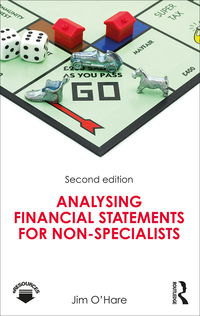

The shoulder joint of a robotic arm uses a de motor with armature control and a set of gears on the output shaft. The main objective of the control system is to accurately control the desired angle of rotation of the joint The typical parameters for the armature-controlled de motor and gears are presented in Table 1 and the dc motor electrical diagram and sketch are shown in Fig. 1. Note that for an armature-controlled de motor, the field circuit is ignored. Table 1. Armature-controlled dc motor and gears parameters Mg M Um r b Km K Ra La Mass of gears Mass of shaft Inertia of gear, shaft, motor, and tachometer Gear radius Motor damping from friction Torque constant Back emf constant Motor armature resistance Motor armature inductance 5.7 kg 6.7 kg 10.91 10-3 kg.m? 31.75 . 10-3 m 0.268 N.ms/rad 0.8379 N.m/amp 0.838 V.s/rad 1.36 12 3.5 mH Armature Stator winding Rotor windings Brush Shan R Brush Commutator Bearings (1), B(A) Inertia =) Friction - b V (1) Inertia load Field Load Angle (a) Fig. 1. A DC motor (a) electrical diagram and (b) sketch. The mathematical model of the system with disturbance torque Ta is presented in (1) and (2). The disturbance torque Ta represents the effect of the load. Va = Raia + Laia + vp (1) Tz = Im - Ta = 5,0" + be' (2) where: Total inertia ), = ]m +r2(Mg + M,) Back emf vp = K30 Motor torque Im = Kmia Load torque TL Disturbance torque Ta The position of the joint is measured with a capacitance sensor as a negative unity feedback loop depicted in Fig. 2. Load disturbance Ta(s) Controller G(s) G(S) de motor & load Ba(s) Desired angle of rotation 0(s) Actual angle Fig. 2. The model of a feedback system. 7. The feedback system illustrated in Fig. 1, has an amplifier as a controller Gc(s) = Ka. Determine the step response for several selected values of the amplifier gain G. (s) = Ka where K, is 2, 5, 10, and 50. Note: Use Matlab script to plot the responses and ignore disturbance torque Ta. The shoulder joint of a robotic arm uses a de motor with armature control and a set of gears on the output shaft. The main objective of the control system is to accurately control the desired angle of rotation of the joint The typical parameters for the armature-controlled de motor and gears are presented in Table 1 and the dc motor electrical diagram and sketch are shown in Fig. 1. Note that for an armature-controlled de motor, the field circuit is ignored. Table 1. Armature-controlled dc motor and gears parameters Mg M Um r b Km K Ra La Mass of gears Mass of shaft Inertia of gear, shaft, motor, and tachometer Gear radius Motor damping from friction Torque constant Back emf constant Motor armature resistance Motor armature inductance 5.7 kg 6.7 kg 10.91 10-3 kg.m? 31.75 . 10-3 m 0.268 N.ms/rad 0.8379 N.m/amp 0.838 V.s/rad 1.36 12 3.5 mH Armature Stator winding Rotor windings Brush Shan R Brush Commutator Bearings (1), B(A) Inertia =) Friction - b V (1) Inertia load Field Load Angle (a) Fig. 1. A DC motor (a) electrical diagram and (b) sketch. The mathematical model of the system with disturbance torque Ta is presented in (1) and (2). The disturbance torque Ta represents the effect of the load. Va = Raia + Laia + vp (1) Tz = Im - Ta = 5,0" + be' (2) where: Total inertia ), = ]m +r2(Mg + M,) Back emf vp = K30 Motor torque Im = Kmia Load torque TL Disturbance torque Ta The position of the joint is measured with a capacitance sensor as a negative unity feedback loop depicted in Fig. 2. Load disturbance Ta(s) Controller G(s) G(S) de motor & load Ba(s) Desired angle of rotation 0(s) Actual angle Fig. 2. The model of a feedback system. 7. The feedback system illustrated in Fig. 1, has an amplifier as a controller Gc(s) = Ka. Determine the step response for several selected values of the amplifier gain G. (s) = Ka where K, is 2, 5, 10, and 50. Note: Use Matlab script to plot the responses and ignore disturbance torque Ta








